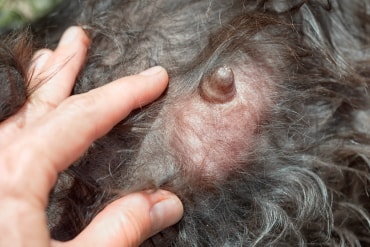Mammary (breast) problems in dogs: an overview
Overview
- Mammary (breast) problems are most common in female dogs that haven’t been speyed.
- Signs of a problem tend to include swelling, redness, an obvious lump, or discharge from the nipple.
- Most mammary problems can be treated, but left without veterinary help, can get worse and become harder to treat.
- Contact your vet if your dog has a mammary problem.
General information
Although mammary problems can affect any female dog, they are most common in those that haven’t been speyed. This is because mammary problems are usually linked to hormones or pregnancy. Most mammary problems can be treated, but if your dog is left without veterinary help, the problem could get worse, become more serious or possibly even life threatening.

Causes
Mastitis
Mastitis is inflammation and infection in a mammary gland. It’s a very painful condition that causes swelling, redness, and often discharge from the nipple. Mastitis is most common in lactating dogs, and those having a phantom pregnancy. Left untreated, mastitis infections can spread around the rest of the body and cause severe illness.
Phantom pregnancy
During a false pregnancy, the mammary glands can become swollen and produce milk.
Mammary lumps
There are a few different types of mammary lump, some harmless and some cancerous. It’s important to get any new lumps checked by your vet before it causes a problem, or potentially spreads elsewhere in the body.
Skin lumps
Skin lumps in the mammary region should always be checked by your vet.
Wounds or ulcers
Wounds, ulcerations and weeping sores on a mammary gland tend to develop if there is another underlying problem (such as mastitis, phantom pregnancy or a lump).
Prevention
It’s not possible to protect your dog from all mammary problems but you can reduce the risk of some by neutering your dog.
Consider insuring your dog as soon as you get them, before any signs of illness start. This will ensure you have all the support you need to care for them.
Published: October 2020
Did you find this page useful?
Tell us more
Please note, our vets and nurses are unable to respond to questions via this form. If you are concerned about your pet’s health, please contact your vet directly.
Thank you for your feedback
Want to hear more about PDSA and get pet care tips from our vet experts?
Sign up to our e-newsletter
Written by vets and vet nurses. This advice is for UK pets only. Illustrations by Samantha Elmhurst.

